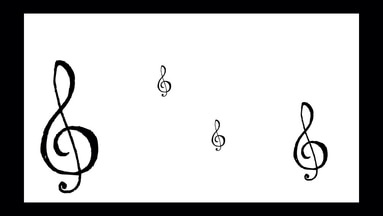
Here are a few good reasons to include music theory in your learning of an instrument:
Learning music theory enables you to read music which makes it possible to work out how to play a piece of music from the score. If you never learn to read music you may always have to rely on someone showing you parrot fashion how to play a new piece of music. Reading music speeds up the process of learning to play a new piece considerably. If you combine reading music with playing by ear and watching demonstrations, you stand a better chance of developing well rounded skills.
Learning music theory increases your vocabulary of performance directions. Understanding performance directions is important for achieving the expression that the composer intended.
Learning the theory of key signatures makes it easier for you to recognise them in a piece of music, as well as making it possible to work out keys that you haven't learned in your scales yet. Learning key signatures and knowing which key a piece of music is in helps you to remember which sharps or flats to play. This also makes group improvisation easier - knowing which key everyone else is in ensures you're playing in the right key.
Understanding and predicting harmonic progressions helps you to anticipate, recognise and learn them more quickly when they occur in a piece of music. An understanding of harmony also enhances improvisation skills.
Being able to recognise and name intervals, chords and cadences consolidates them in your head and enables you to spot them when they occur in a piece of music you're learning, which aids the memorisation process and allows you to anticipate the sound. Read more about chords or intervals.
Understanding and recognising rhythmic patterns comes more naturally after studying music theory. If you recognise rhythmic patterns and remember how they are supposed to sound you don't have to spend quite so much time working out note values mathematically. Conversely, if you do encounter an unfamiliar rhythmic pattern, your understanding of music theory will allow you to work it out.
Understanding how different time signatures work enables you to apply the appropriate emphasis and feel for each different time signature. Eg. the lilting feel of compound time signatures compared with the march like feel of simple duple time signatures or the waltz like feel of triple time signatures.
I have provided a music manuscript paper template which you can download and print out for free, as it comes in useful for music theory: Music Manuscript Paper
Articles main menu
Learning music theory enables you to read music which makes it possible to work out how to play a piece of music from the score. If you never learn to read music you may always have to rely on someone showing you parrot fashion how to play a new piece of music. Reading music speeds up the process of learning to play a new piece considerably. If you combine reading music with playing by ear and watching demonstrations, you stand a better chance of developing well rounded skills.
Learning music theory increases your vocabulary of performance directions. Understanding performance directions is important for achieving the expression that the composer intended.
Learning the theory of key signatures makes it easier for you to recognise them in a piece of music, as well as making it possible to work out keys that you haven't learned in your scales yet. Learning key signatures and knowing which key a piece of music is in helps you to remember which sharps or flats to play. This also makes group improvisation easier - knowing which key everyone else is in ensures you're playing in the right key.
Understanding and predicting harmonic progressions helps you to anticipate, recognise and learn them more quickly when they occur in a piece of music. An understanding of harmony also enhances improvisation skills.
Being able to recognise and name intervals, chords and cadences consolidates them in your head and enables you to spot them when they occur in a piece of music you're learning, which aids the memorisation process and allows you to anticipate the sound. Read more about chords or intervals.
Understanding and recognising rhythmic patterns comes more naturally after studying music theory. If you recognise rhythmic patterns and remember how they are supposed to sound you don't have to spend quite so much time working out note values mathematically. Conversely, if you do encounter an unfamiliar rhythmic pattern, your understanding of music theory will allow you to work it out.
Understanding how different time signatures work enables you to apply the appropriate emphasis and feel for each different time signature. Eg. the lilting feel of compound time signatures compared with the march like feel of simple duple time signatures or the waltz like feel of triple time signatures.
I have provided a music manuscript paper template which you can download and print out for free, as it comes in useful for music theory: Music Manuscript Paper
Articles main menu